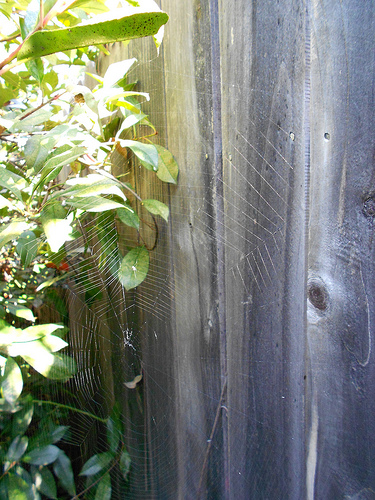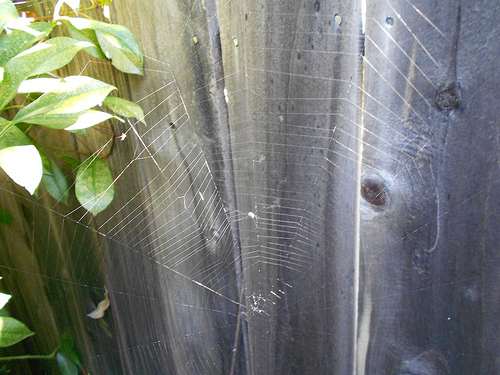We were busy pulling all of the dead and brown things out of the garden when I spotted it! The most perfect spider web I have seen in a long time was right next to the hose reel. I actually touched it before I saw it and it startled me.
The sun was shining just right to see most of it in a photo so I ran inside and snapped a few images to share here on the blog. I called Mr. A and my husband over to take a look and we admired the preciseness of the web and we talked a bit about how it was constructed with a frame and then the web spun around and around.
I took the opportunity to see if the inside threads were sticky like we read about in the Handbook of Nature Study.
Isn’t that grand? I love learning new things alongside my boys….
“The radii or spokes, the guy-lines, the framework, and the center of the web are all made of inelastic silk, which does not adhere to an object that touches it. The spiral line, on the contrary, is very elastic, and adheres to any object brought in contact with it. An insect which touches one of these spirals and tries to escape become entangled in the neighboring lines and is thus held fast until the spider can reach it. If one of these elastic lines be examined with a microscope, it is a most beautiful object. There are strung upon it, like pearls, little drops of sticky fluid which render it not only elastic but adhesive.” Handbook of Nature Study, page 440.
Thanks Anna Botsford Comstock for bringing such an amazing detail to our attention. We have a heightened sense of awe over something we have overlooked our entire lives. Now I can rest our web study for the season, unless a new web presents itself.






















